Murder on Music Row: Nashville police 'thanked the Lord' after miracle evidence surfaced
This is final installment in an eight-part series exploring the 1989 murder of Kevin Hughes, a country music chart director who knew too much.
NASHVILLE, Tenn. — People make jokes about Flintstone.
It’s the Bedrock of Georgia.
You can stop a car there with your bare feet.
Yabbadabbadoo. (For the younger readers, “The Flintstones” was a 1960s era television cartoon. Every caveman/woman in the cartoon had bare feet. Google it.)
The real Flintstone, in Georgia, is the place where the biggest piece of the Murder on Music Row investigation was discovered.
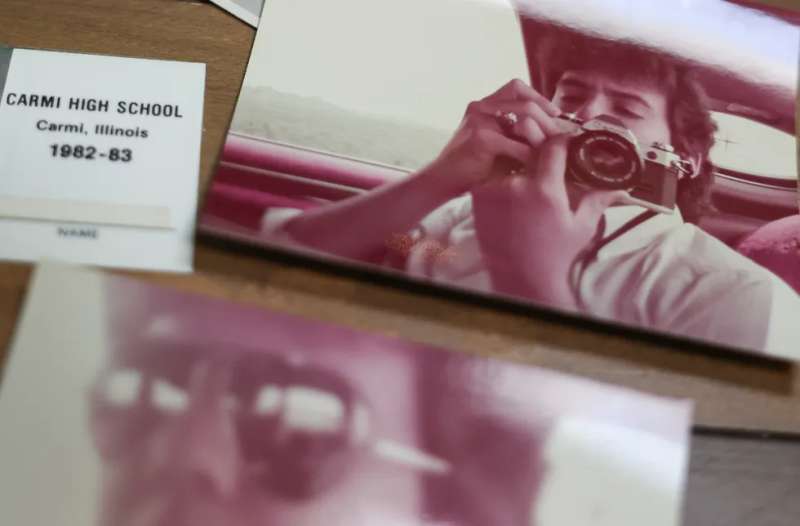
It happened on the property of a woman named Patricia Smith, who lived in a little white house with a bullet hole in the dining room window.
Smith and her two daughters, Erica and Hillary, lived in the four-bedroom house at the end of a long driveway in the valley below Lookout Mountain just south of Chattanooga. Grandpa Ralph lived in a room over the garage.
When Smith and her daughters moved there in 1992, the landlord was a man named Steve Daniel. Nice guy, they said. Daniel wasn’t around much, but when he was there, he was in and out of the garage, which he kept locked.
Not long after they moved in, so did the Georgia Bureau of Investigation.
“We didn't have access to the garage,” said Erica Libby who was in the fourth grade at the time. “And the GBI came and presented us with a search warrant. They kicked down the door to the garage.”
Listen to the podcast
- Episode 1: There Ain't No Justice In It | Apple | Spotify | iHeart
- Episode 2: Who Shot Sam? | Apple | Spotify | iHeart
- Episode 3: Chasing That Neon Rainbow | Apple | Spotify | iHeart
- Episode 4: Tell It Like It Is | Apple | Spotify | iHeart
- Episode 5: It Ain't My Fault | Apple | Spotify | iHeart
- Episode 6: If You Don't Know Me By Now | Apple | Spotify | iHeart
- Episode 7: Life of Sin | Apple | Spotify | iHeart
- Episode 8: Bury Me In Georgia | Apple | Spotify | iHeart
The GBI didn’t leave.
“They set up cameras in our laundry room, and along the property lines,” she said. “They mostly had tripods with the cameras looking through windows. And then they had like the SWAT team down in the wooded areas.”
On Sept. 22, 1992, the FBI and GBI swooped in on the pretty white house and garage at the end of the long driveway. They called the operation: “Sand Mountain Gloom.” It was named for the southernmost mountain in the Appalachian range.
A drug dealer/landlord named Steve Daniel was one of 19 people arrested in the sting across several states. Hillary and Erica watched from the window.
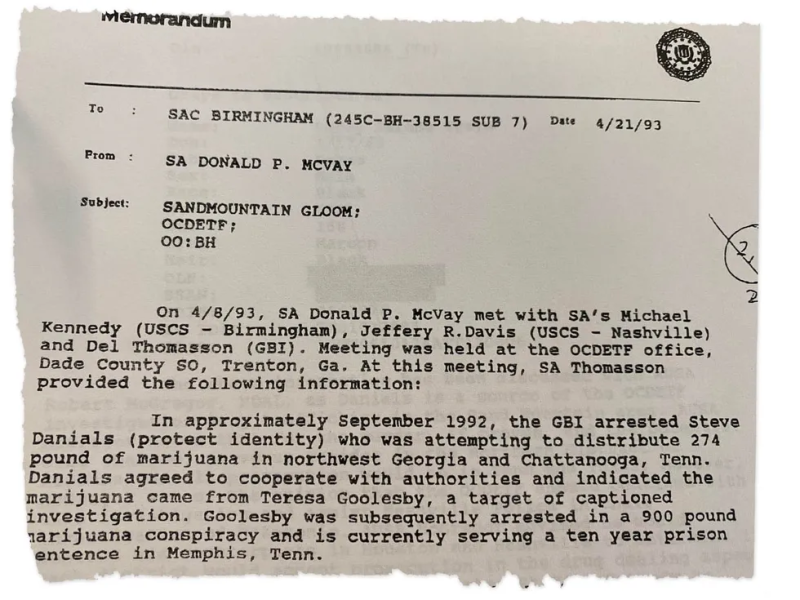
According to the GBI, Daniel participated in the movement of 3,000 pounds of marijuana from a cartel in Mexico through the house Daniel owned in Flintstone to cities across the United States.
To lessen his prison exposure, Daniel chose to work with the Georgia Bureau of Investigation as an informant. Special Agent Del Thomasson of the GBI was assigned to work with Daniel.
Daniel told them his Nashville contact in the distribution scheme was a music promoter.
Richard “Tony” D’Antonio.
Trouble down in Georgia
Steve Daniel and Tony D had been buddies for a long time.
Daniel told the GBI how they had muled drugs together all over the South. They sang country songs, thought up lyrics and sped away from the cops.
In those days, D’Antonio really acted like a tough guy.
Once, D’Antonio thought someone had ripped off some of his drug money.
He kicked in their back door.
According to the police report from the incident, D’Antonio said, “I’ll kill everybody.” And, as if that wasn’t threatening enough, he pointed at a woman in the room and said he would “gouge her eyes out.”
Witnesses said he brandished a .38 caliber handgun.
Neighbors on Colonial Hills Drive in Chatsworth, Georgia, heard his threats and called 911.
Murray County Sheriff’s deputies arrested D’Antonio on Nov. 22, 1991 – two years and eight months after Kevin Hughes was murdered on Music Row with a .38 caliber handgun.
When deputies confronted D’Antonio in 1991, he was unarmed.
On his booking form, D’Antonio listed a Mt. Juliet address and his occupation as “entertainer.” Police confiscated a pocket knife, wrist watch, gold bracelet, gold ring, gold chain with a diamond piano pendant and $882 in cash.
The gun was never recovered.
The Nashville Murder Squad would have loved to compare that gun to the one that killed Kevin Hughes.
A surprise witness comes forward
By 1991, the Murder on Music Row investigation had gone cold.
Nashville Police Det. Bill Pridemore thought D’Antonio and Sammy Sadler, who was also shot that night, were involved in a conspiracy to bump off Hughes because he was trying to clean up the Cash Box Magazine Independent Country Music chart.
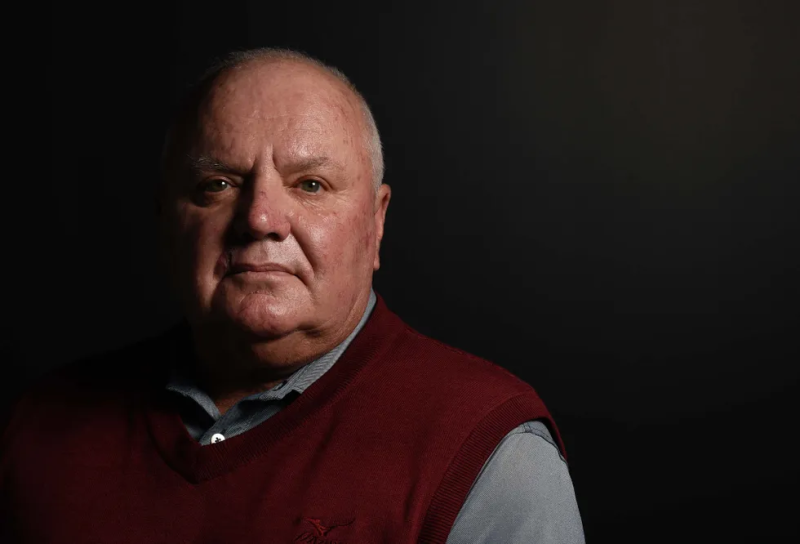
Pridemore also believed promoter Chuck Dixon, who was close with D’Antonio and was running a lucrative scam involving chart positions, was involved.
“We had the focus on Chuck and Tony, mainly Tony,” Pridemore said. “We knew Tony D’Antonio killed Kevin.”
Pridemore said he couldn’t prove any of it. He didn’t have anything other than circumstantial evidence against Sadler, D’Antonio or Dixon.
About Sadler, the detective said: “You can’t prove he was involved in it, so you had to give him the benefit of the doubt.”
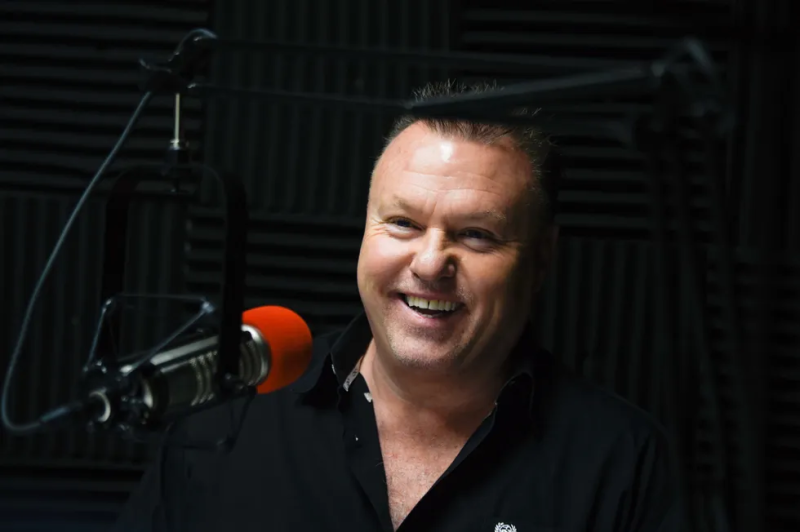
That’s where Steve Daniel came in.
Unbeknownst to Pridemore and the Murder Squad in Nashville, in 1992 the GBI wired Daniel’s phone. Thomasson asked him to call D’Antonio to set up another drug buy.
During the call, Thomasson picked up some interesting chatter from D’Antonio.
It wasn’t about drugs.
D’Antonio brought up the murder of Kevin Hughes. He told Daniel if anyone ever asked he should say D’Antonio and Daniel were together on March 9, 1989, until after the 11 o’clock news.
Daniel asked D’Antonio about a .38 caliber gun he had bought from Daniel.
D’Antonio told him not to mention the gun, and that the gun would never be found.
Thomasson concluded that, while it looked like D’Antonio might be involved in a murder, “as of this date, (there was) nothing prosecutable.”
Thomasson did, however, track down Pridemore in Nashville to let him know.
“A GBI agent, Del Thomasson, came to town,” Pridemore said. “He had some mini cassettes. He said he had an informant. This informant … he didn’t tell us who he was.
“The phone calls wasn’t enough to convict (D’Antonio).”
Thomasson said Daniel would be an informant on several other cases that took precedence over Pridemore’s cold case murder.
But Thomasson made a promise.
“He told me, ‘Once we’ve worn him out, and we’ve used him all up, we’ll get back to you,’” Pridemore said.
13 years after murder, a break in the case
Collaboration between investigative agencies in different states is not a law enforcement strength.
It took almost 10 years before Pridemore met Steve Daniel.
By the time that meeting happened, in a motel parking lot off Interstate 24 outside Chattanooga, Pridemore wasn’t even part of the Murder Squad anymore.
Nearing retirement, he had been transferred to the Cold Case Unit.
His first case in his new job: the Murder on Music Row.
“A detective is not worth a grain of salt unless he solves his unsolved cases first,” Pridemore said.
Pridemore called Del Thomasson with the GBI.
Not only were the Georgia authorities finished using Steve Daniel as an informant, Daniel had already served time in prison. He was a free man.
So much for the GBI keeping its promise to Nashville.
Pridemore said he will never forget what Daniel said the first time he asked about Tony D’Antonio.
“He said, ‘Man, have you seen that man run?’ He runs like a damn duck,’” Pridemore said.
Remember, witnesses from the scene of the shooting had said the killer ran with a limping, awkward gait.
This motel parking lot conversation took place in 2002, 13 years after Kevin Hughes was fatally shot.
Backyard target practice
There were other bits of information Daniel revealed.
He said he sold Tony D’Antonio a .38 caliber handgun and wadcutter bullets (wadcutters are flattened slugs mostly used for target practice) on March 9, 1989 — the evening of the murder.
D’Antonio left Daniel’s house with the gun before 7 p.m. (not after the 11 o’clock news, as D’Antonio had instructed him to say). This was the little white house with the long driveway that he would eventually rent to Patricia Smith.
And, the big news … D’Antonio had fired practice shots in the backyard before he left.
On April 29, 2002, Pridemore showed up at Smith’s house with a search warrant.
Could there possibly be a bullet in the backyard of that house that would match the bullets pulled from Hughes’ body?
Erica Libby was a teenager when Pridemore, Daniel and two GBI agents went into her backyard.
“There's no close-by neighbors,” Libby said. “So the back is all just wooded. They'd put targets up … I think there was even a plastic Santa Claus they had standing up back there. People could just go back and just shoot into the woods. This is just country living people. People just shoot guns for fun.”
She said dozens, if not hundreds of people, had used her backyard for target practice.
Pridemore, equipped with shovels and metal detectors, had a major problem.
He was looking for a needle in an overwhelming stack of needles.
“I’m telling you there have been hundreds of guns shot back there on the side of a mountain,” Pridemore said. “He (Daniel) walked us over there and showed us.”
Pridemore asked Daniel to point out a target. There was none, Daniel said. He merely pointed in the general direction of the woods.
Pridemore said he started to dig with a shovel, but there were thousands of bullets. There was no way, he thought, people at the crime lab were going to have the time or enthusiasm to examine every bullet.
So Pridemore picked up one shovel scoop.
“The odds after this long of that bullet still being here: Zero,” Pridemore said.
Could one bullet possibly match?
There were 13 “projectiles” recovered in Pridemore’s grab – nine whole bullets, two shell casings and two bullet fragments.
Pridemore drove them (plus three bullets taken from the Hughes crime scene) to the Tennessee Bureau of Investigation and handed them to Special Agent Tommy Heflin on April 30, 2002.
“Normally, the turnaround for a firearms examination is 6 to 8 months before they can get results,” Pridemore said.
Pridemore begged.
“I said, ‘Tommy these came from the Music Row case,’” Pridemore said. “You remember that? He says, ‘Yeah.’ Well these are the bullets we got out of Georgia. I don’t know if any of them are gonna match. But can you at least examine them? I’m doing you a favor. I could have brought two or three thousand.”
The next day, May 1, 2002, Pridemore went to the golf course.
At 3:15 p.m. his phone rang. It was Heflin.
“I remember standing at the driving range hitting balls, and he called me,” Pridemore said. “He says, ‘Bill,’ in his old country accent … he says, ‘Bill, four of those bullets wasn’t worth a shit. I couldn’t tell you what kind they were. Three of them were rifle bullets. They’re not even from a pistol.
“But one of them is a perfect match. I said you have got to be shitting me. He says, ‘Nope, perfect match.’”
Pridemore looked to the heavens.
“I got down on my knees and thanked the Lord right then,” Pridemore said. “Thank you Jesus. That’s a miracle.”
Heflin’s report shows that the second bullet he tested was the “perfect match.”
What happens in Vegas
When they found Tony D’Antonio, he was working as a pit boss at Fitzgerald’s, a casino in the old section of Las Vegas.
Pridemore and Postiglione flew out to get him, but all they had to do was go to lunch while Las Vegas police arrested Tony D.
The murder trial lasted only four days. On the night of Sept. 25, 2003, Richard F. D’Antonio was convicted of killing Kevin Hughes. He spent the rest of his life in prison.
Tony D died in custody in 2014.
Near the end of his life, he wrote a letter that read, in part:
“All the money in the world cannot buy a second of time. When I was younger I never thought about it, but as I got older I realized it a lot more. I think it’s important that we get our lives together to face the music and be ready for the Lord’s return where we will live for eternity.”
Over the years, Sammy Sadler has regained the use of his right arm.
He sings and plays guitar. He has released four albums: “A Heart Shaped Like Texas,” “Louisiana Rain,” “Everything’s Gonna Be All Right,” and “1989,” which was named after the year he was shot.
Here’s what didn’t happen in Nashville.
Even though there was a murder on Music Row and the investigation turned up evidence of corruption, there were no hearings, no task force was created to stop the fraud inflicted on the uninitiated performers who arrive in Music City with big dreams.
“MNPD didn’t have the resources,” Pridemore said. “You’re talking traveling and hundreds of interviews. We were aware of it. We suspected it. Everybody told us about it. But what can we do? We had a murder to solve. We were hoping somebody would pick up on it. But it never generated any interest that we know of.”
The police, local prosecutors, the TBI and FBI didn't investigate how widespread the corruption might have been, and the state grand jury system lacks investigative authority, as is the case in other states.
“I think grand juries do fantastic work in the federal system and in other states’” said Kathy Morante, who was one of the prosecutors on the Tony D’Antonio case. “So it would be a good option to have. That would have to be done legislatively.”
Thirty-five years after the Murder on Music Row, the same bottom line still applies.
As you hang onto your dreams,
Hang onto your wallets.
Sammy Sadler said music promoters don’t want to call attention to the death of Kevin Hughes. Just a few years ago, he discussed having a benefit concert to honor Hughes.
“I was in town a few years back,” Sadler said. “I was up here recording, and I was at a, I took a break and went up to West End to get a drink and get some gas in my car. I heard somebody say Sammy. I turned around and it was a record promoter. He’s still here, and he’s still promoting records. He come over and shook my hand and asked me how I was doing. I said I’m doing ok. He said man, what would you think about trying to do something for Kevin. I said man, I think it would be a great idea. Whatever you want to do. Just let me know.
“I run into him at CRS a year or two later. I said man, whatever happened to that deal that you wanted to do something for Kevin? He said man, I talked to people down on the Row, and nobody wanted to do anything for him … (It’s) because of the content of what this is all about. It’s about payola and about the music business and how it’s really run. It’s a shame.”
Grief and happiness on March 9
In the Hughes family, March 9 has always been a difficult date.
Kevin’s brother Kyle said the sadness inevitably washes over him in early spring.
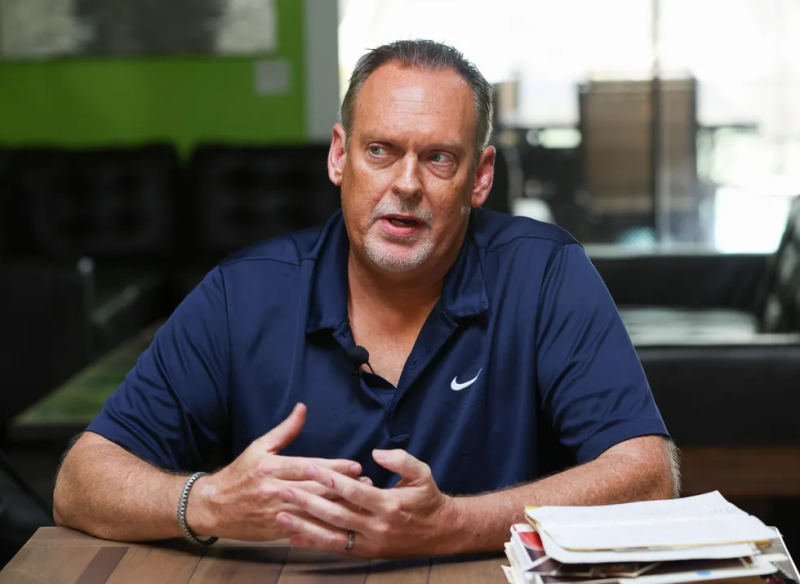
Kevin never got to meet Kyle’s wife, Brennan, or his sons Hutchinson K (the K stands for Kevin) and Deegan.
Kyle and Brennan decided in 2014 their family needed more.
They wanted to adopt a baby girl.
It was not lost on them when the final adoption agreement was signed on Oct. 29, 2014.
That would have been Kevin’s 49th birthday.
Before she was born, they decided to give their new daughter a name that held so much meaning to them.
She would be called Haviland Summit Hughes, after the street of their first house in Birmingham, Alabama, and the place where they had their first date.
In 2015, as the calendar turned to spring, the Hughes’ realized the significance of what was happening.
Their new daughter was born in Florida.
March 9, 2015.
“The first thing to think about is, of course, making sure he has a great birthday,” Kyle Hughes said. “That she is having a good time to celebrate her. But always in the back of my mind, it's the day of tragedy and sadness. But we try to kind of put it to the back burner …
“I think that's what Kevin would want, of course, for us to be focused on our daughter.”
March 9 has changed forever.
Disclaimer: The copyright of this article belongs to the original author. Reposting this article is solely for the purpose of information dissemination and does not constitute any investment advice. If there is any infringement, please contact us immediately. We will make corrections or deletions as necessary. Thank you.





